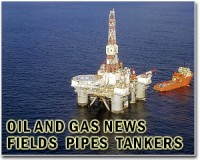 |
Brussels (AFP) March 28, 2011 Europe's transport network will need a 1.5-trillion-euro private sector overhaul to meet the needs of a post-oil world and slash carbon emissions, the European Commission said Monday. A new strategy for the sector launched by the commission aims to "dramatically reduce Europe's dependence on imported oil and cut carbon emissions in transport by 60 percent by 2050," the EU executive said. But ideas for getting there put forward by the European Union's transport commissioner Siim Kallas attracted harsh criticism from the auto sector, small businesses and environmental campaigners who said they were pie in the sky. Kallas set out what he called "very radical, very ambitious targets" established by the EU executive in a white paper on road, rail and sea network needs projected for 2050. His vision included "close to zero fatalities" on Europe's roads, "zero" petrol or diesel cars in cities, and half of all intercity passenger and freight transport moving to rail or waterways. "We are talking about the necessity of investment of 1.5 trillion euros," or $2.1 trillion, Kallas said. He insisted he was taking his non-binding, non-legislative plans to industry and the private sector "with a certain hope" despite the "huge, huge and complicated question" posed by future public finance volumes expected to become increasingly limited. The head of the automobile industry's trade association ACEA said the new strategy was a major "U-turn," dismissing a principle that the most efficient means of transport should be the one favoured each and every time. Ivan Hodac said the call to shift from road to rail or waterborne transport for distances longer than 300 kilometres (187.5 miles) disregards "the actual factors steering the choice of transport mode." A European craft and small business employers' organisation said this was unrealistic, citing "strong financial constraints" including an absence of tax incentives or other schemes to support investment. Environmental campaigners Transport & Environment attacked the lack of immediate changes. "The only concrete action the commission proposes within its current mandate (2010-14) is to expand airport capacity, which will make the headline targets even harder to reach," said director Jos Dings. He said 13 billion euros of annual EU transport infrastructure spending should only go on environmentally "sustainable projects." Other key targets are for 40 percent use of sustainable low carbon fuels in aviation and a cut in shipping emissions of at least 40 percent and a 50 percent shift away from conventionally-fuelled cars by 2030. "We can break the transport system's dependence on oil without sacrificing its efficiency and compromising mobility. It can be win-win," Kallas also said in a statement. Kallas wants to jolt the shipping sector into action, after a decade without agreement with the International Maritime Organisation (IMO) over emissions cuts in the effort to control global warming. "If the IMO will not take a decision, then we have to create our own approach," he said. A combination of "operational measures, technical measures, including new vessel design, and low-carbon fuels" could suffice, he claimed. The white paper also cites the completion of a single European sky of 58 countries and one billion inhabitants by 2020 as an opportunity to sharpen "competitiveness and climate goals" in negotiations with the International Civil Aviation Organisation.
Share This Article With Planet Earth
Related Links Powering The World in the 21st Century at Energy-Daily.com
 World looks beyond Libyan oil as conflict rages
World looks beyond Libyan oil as conflict ragesWashington (AFP) March 26, 2011 One month into its unrest, the shutdown of Libya's oil fields is creating strains in the world's oil networks as consumers scour the world to replace its highly-prized "sweet" crude. With strongman Moamer Kadhafi entrenched and the conflict with rebels raging on, producers see no quick return to the market for Libyan crude. That is sparking a search for reserves elsewhere in Africa and a ... read more |
|
| The content herein, unless otherwise known to be public domain, are Copyright 1995-2010 - SpaceDaily. AFP and UPI Wire Stories are copyright Agence France-Presse and United Press International. ESA Portal Reports are copyright European Space Agency. All NASA sourced material is public domain. Additional copyrights may apply in whole or part to other bona fide parties. Advertising does not imply endorsement,agreement or approval of any opinions, statements or information provided by SpaceDaily on any Web page published or hosted by SpaceDaily. Privacy Statement |